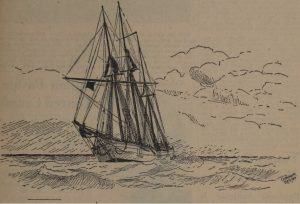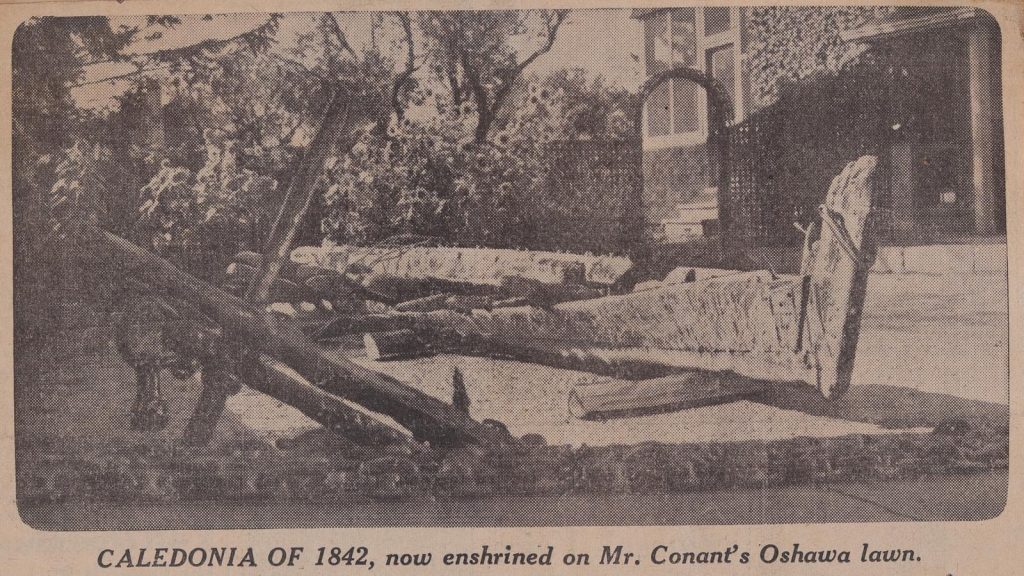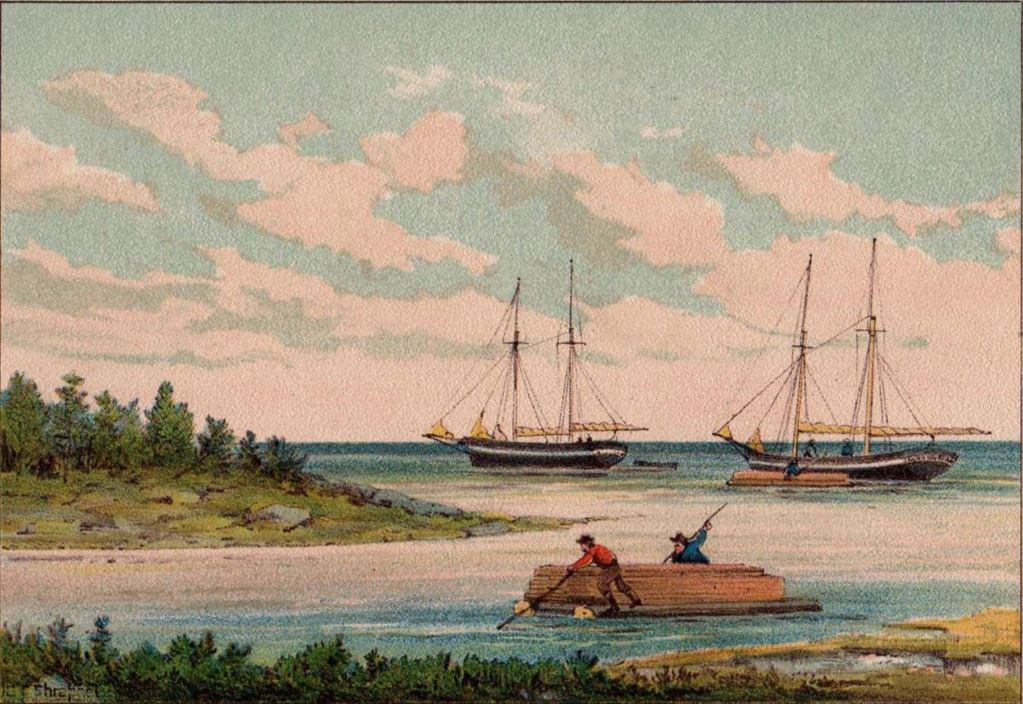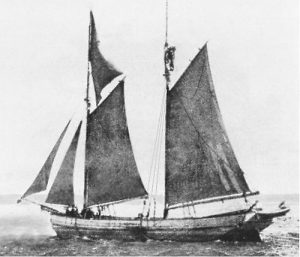The Ships of Oshawa
Oshawa has a marine heritage it can be proud of. Where individuals with vision felt shipping was a viable enterprise.
Shipbuilding was being done on the east side of the current harbour by David Annis, Daniel Conant, and James and Abram Farewell. These individuals are said to have built and launched several ships, namely the Allies, Lord Durham, Caledonia and Paragon at Oshawa Harbour.
The schooner Caledonia was launched by the Farewell family in 1850. A vessel by the same name is known to have grounded on the shore east of Oshawa Harbour near Bluff Point in 1881. Whether this is the same vessel as the one launched by the Farewells remains a mystery, since Caledonia was a popular name for vessels.
Another vessel to have sailed from Oshawa Harbour was the Industry, owned and captained by the Conant family. Local lore suggests this vessel played an interesting role in 1830s politics. Ackeus Moody Farewell was sympathetic to the reforms proposed by William Lyon Mackenzie, but he was opposed to any use of violence. After the defeat of Mackenzie’s forces on December 7, 1837, at Montgomery’s Inn, several refugees appeared at the mouth of the creek on Farewell’s property. The refugees were hidden in a barn and, under cover of night, members of the Farewell family led them to the Industry which was sailing to Oswego, New York. They made it safely across the lake, but the ship was trapped in an ice jam. All on board were taken to safety, but the Industry suffered irreparable damage and was lost.
The schooner, Lord Durham, was built circa 1836 in Oshawa and was used quite extensively by David Annis to sail his lumber to Niagara and other points on Lake Ontario. Oshawa Creek became a water highway where lumber was floated down to the harbour for shipment to other centres on the lake. David Annis charted other ships to carry lumber and products from Oshawa flouring mills, such as the Plow brand of flour from J.B. Warren’s mill, to Kingston. Flour was shipped in barrels, and the freight paid was $1.00 per barrel. Newspapers tell us activity between Oshawa and Kingston was brisk in the 1840s. In 1845 and 1846, the Lord Durham made journeys loaded with wheat, flour and ashes. The fate of the Lord Durham is presently unknown.
A well-documented, Oshawa-built ship was the schooner Paragon. Built in 1852-53 by Lummeree, she was 140 tons. The vessel was totally rebuilt in 1863, and in 1868 she was totally wrecked at Sarnia, on Lake Huron, but there is no mention of damage costs or casualties. In 1869, she was registered as a scow instead of a schooner. In 1888 she was rebuilt in Lakeport, Ontario and renamed the Keewatin.
In 1854, another schooner built and launched in Oshawa was the Omar Pasha, which was owned, operated and captained by James Farewell. In 1934, the Toronto Telegram reported that the Omar Pasha was lost circa 1860 on Stony Island, located due south of Kingston, Ontario in United States water.
The largest sailing ship ever built in Oshawa was the tri-masted bark Allies. Built by W. Little in late 1855, she was owned by Abram Farewell. The Allies took Abram to England and the west coast of Africa. It is believed that Allies was last used as a coaling vessel along the coast of Africa.
Some of the residents who resided in Oshawa were also Captains who sailed out of the harbour, including Joseph Moore, Daniel Conant, and James and Abram Farewell and Captain Andrew Smith, who resided at the lakefront in what is known as the ‘Sailors Inn’.
Captain Andrew Jackson Smith was captain of a three-mast schooner and sailed from Oshawa to Oswego, New York and Port Arthur. His father Abraham Smith bought ‘Big Sailors Hotel’ in 1876.
– Betty MacInally, 2002
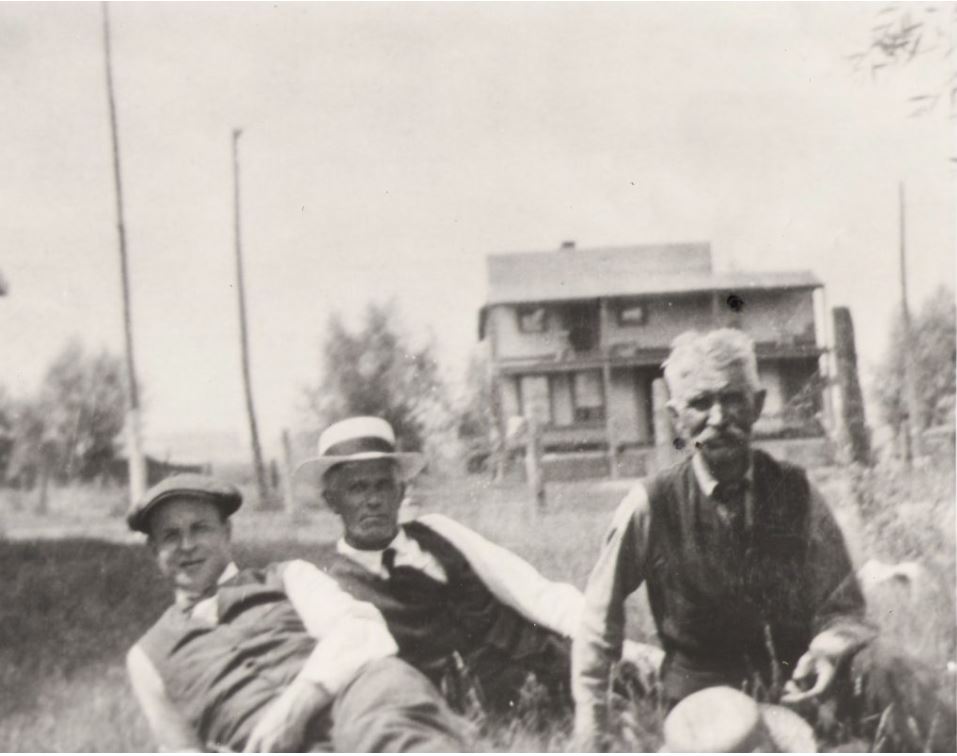
Sailors Inn, sitting from left to right is Bill Knot, Fred Smith and Captain Andrew Smith, date unknown.
Interview with Reginald Smith about residing in the Sailor’s Inn. Enjoy this audio clip with an English transcript.


